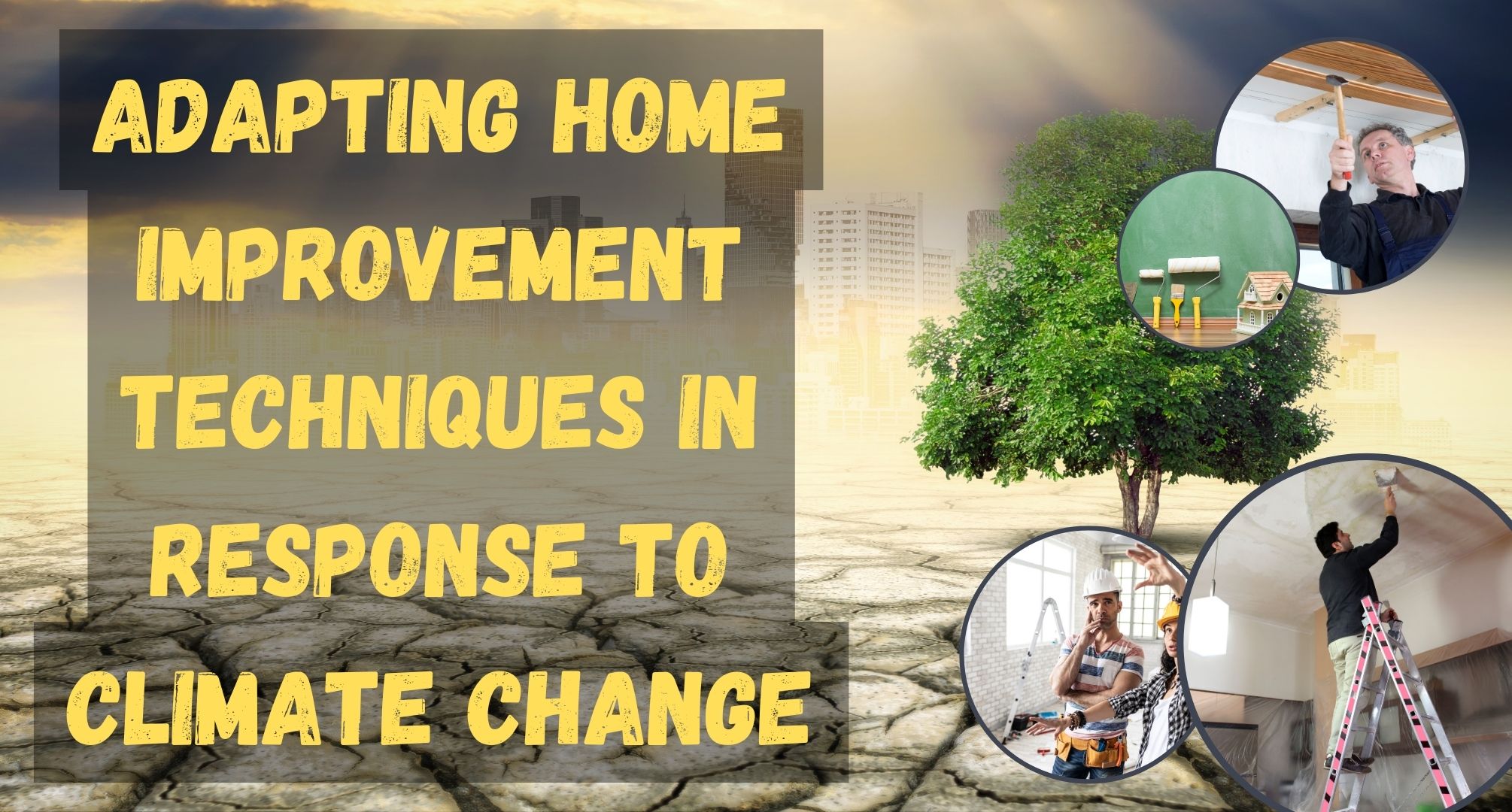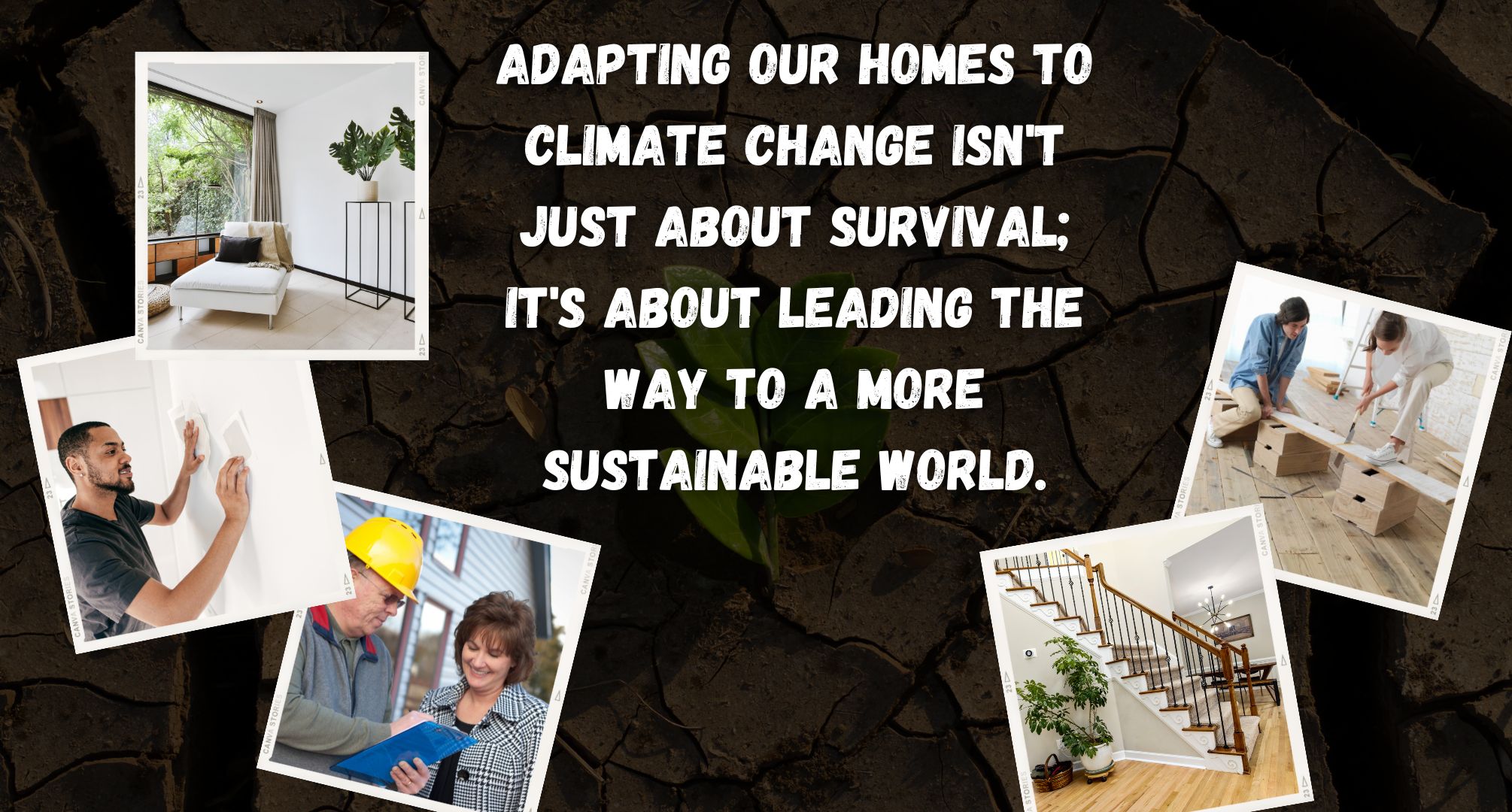Climate change, often known as global warming, is the gradual change in weather patterns and global temperature rise. It’s a serious problem with several effects, one of which is how it significantly affects home improvement methods. Traditional home renovation techniques must evolve to meet these new demands as our climate continues to change.

The State of Home Improvement Techniques Right Now
Traditionally, home renovation has involved actions taken to raise the value, comfort, and appeal of houses. However, these traditional methods frequently fail to account for the rising danger that climate change poses. Climate change poses significant difficulties to our homes, from more regular heatwaves hurting the effectiveness of air conditioning systems to more frequent flooding jeopardizing structural integrity.
For instance, homeowners in hotter climates can discover that their cooling systems are insufficient and need more frequent maintenance or possibly replacement. Similar to how greater rainfall in some locations could result in more frequent water damage, calling for ongoing waterproofing and repair operations. The limitations of conventional house improvement techniques in the face of climate change are shown by these real-world instances.
Adaptation of Home Improvement Methods Is Required
It’s important to adapt home remodeling methods to climate change not simply for comfort but also for affordability and sustainability. Without adaption, homeowners might have to deal with increasing health concerns, declining property values, and escalating maintenance costs. The adoption of environmentally friendly house modifications, on the other hand, can result in energy savings, increased home value, and healthier living circumstances.
Modification Techniques for Home Improvement
Improvements to Homes That Save Energy
Increasing energy efficiency is one of the most important adaptation techniques for combating climate change. This entails putting in energy-saving fixtures that can lower electricity use and greenhouse gas emissions. A home’s capacity to maintain a pleasant temperature can be significantly increased by enhancing housing insulation and sealing, which will decrease the need for heating and cooling equipment. Solar panels are one example of a renewable energy source that may be integrated into a home to make it more self-sufficient and sustainable.
Materials and Designs That Are Climate-Resilient
Homes can withstand the effects of climate change by using materials and designs that are climate resilient. Using resilient materials that can withstand harsh weather, water-resistant materials to fend off rising floods, and heat-resistant materials to handle hotter temperatures are all examples of this. For instance, metal roofing can offer greater resistance to high winds and hail than conventional shingles.

Improvements to the outdoors’ landscaping
Outdoor areas can also adapt to climate change. Home cooling can be achieved naturally by planting shade trees, which eliminates the need for air conditioning. Utilizing rainwater harvesting devices and other water conservation techniques can assist manage rising rainfall and lessen dependency on municipal water supply. Additionally, cultivating gardens that are hospitable to wildlife can sustain regional biodiversity, which is crucial as climate change disrupts natural habitats.
Examples of Effective Adaptations
The number of effective home renovation adaptations to climate change is rising. For instance, despite the fact that temperatures were rising, a homeowner in Phoenix, Arizona, updated their home with solar panels, energy-saving appliances, and better insulation, greatly lowering their electricity costs. While this was going on, a Florida homeowner protected their home from flooding damage by elevating it and using water-resistant materials, which also helped to lower insurance rates.
These examples show how adjusting house improvement methods to climate change may be advantageous economically and environmentally, proving that resilience and sustainability can coexist in our homes.
Home Improvement in a Changing Climate: The Future
Future house improvement patterns will probably be further influenced by climate change. The need for energy-efficient, long-lasting, and robust house modifications will increase as weather patterns become more intense. In order to meet this demand, innovation and technology will be crucial, from smart home systems that maximize energy efficiency to novel materials that provide improved resilience to climate impacts.
The significance of modifying house improvement methods to climate change cannot be emphasized, in my opinion. Our dwellings, our sanctuaries, must alter as the climate changes in order to withstand these new circumstances. In this process, homeowners, builders, and legislators all have a part to play.
Homeowners can make decisions that are good for the environment, as well as for their comfort and financial situation. New, more durable and sustainable techniques and materials can be developed by builders, who can also promote them. Regulations and incentives that promote eco-friendly house upgrades can be shaped by policymakers.
It’s important to safeguard our future as well as our homes in this situation. A local response is required to the global problem of climate change. We may help with the answer by reevaluating and modifying the ways we improve our houses so that they are not just lovely and cozy, but also resilient and sustainable in the face of climate change.
Ultimately, these modifications transform our homes into more than simply a place to live but also into pillars of our dedication to a sustainable future. These advancements provide as evidence of our capacity for adaptation and resilience, qualities that will guide us through the era of climate change. Our ability to innovate, adapt, and create a better world, starting with our homes, gives us hope as we look to the future.
